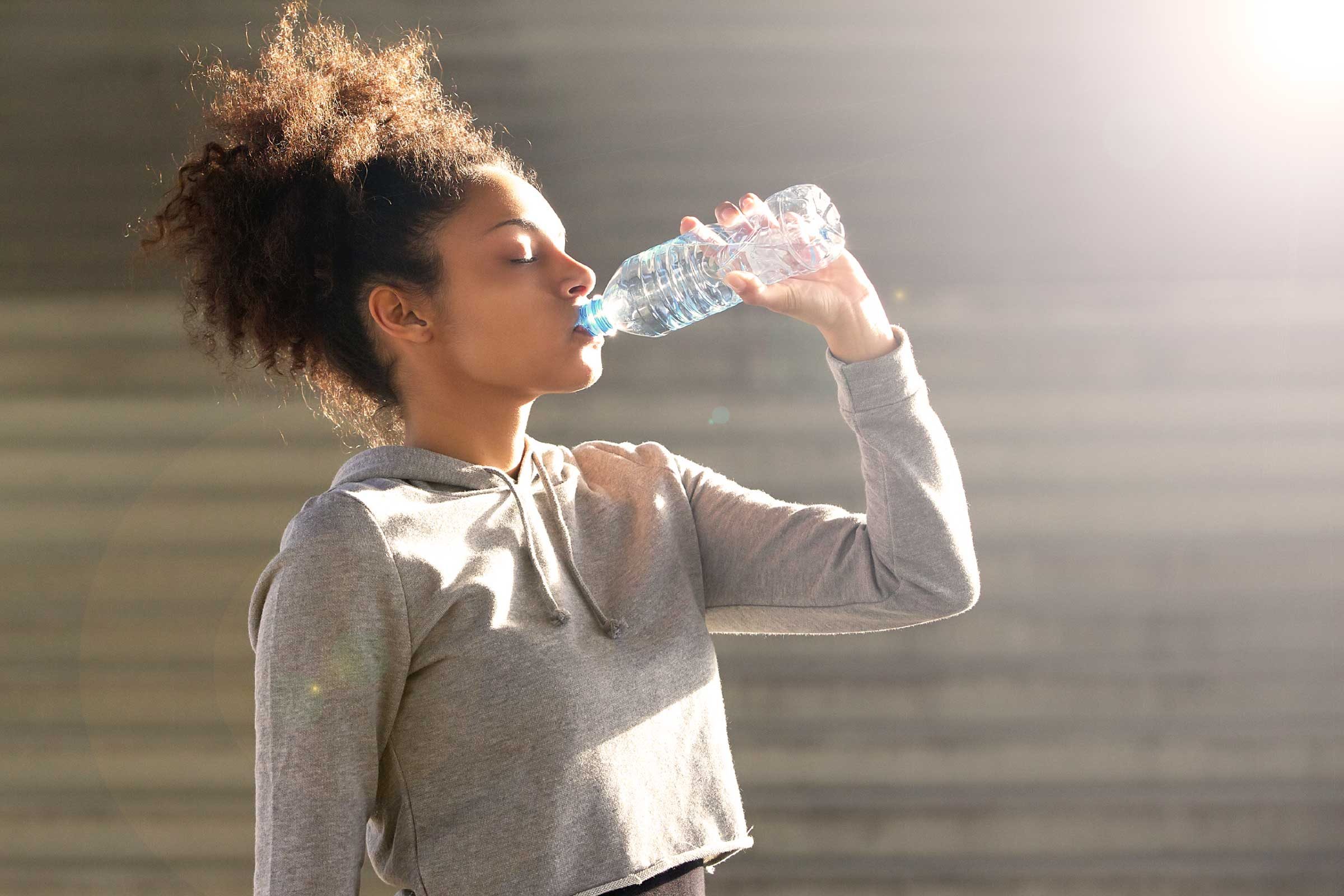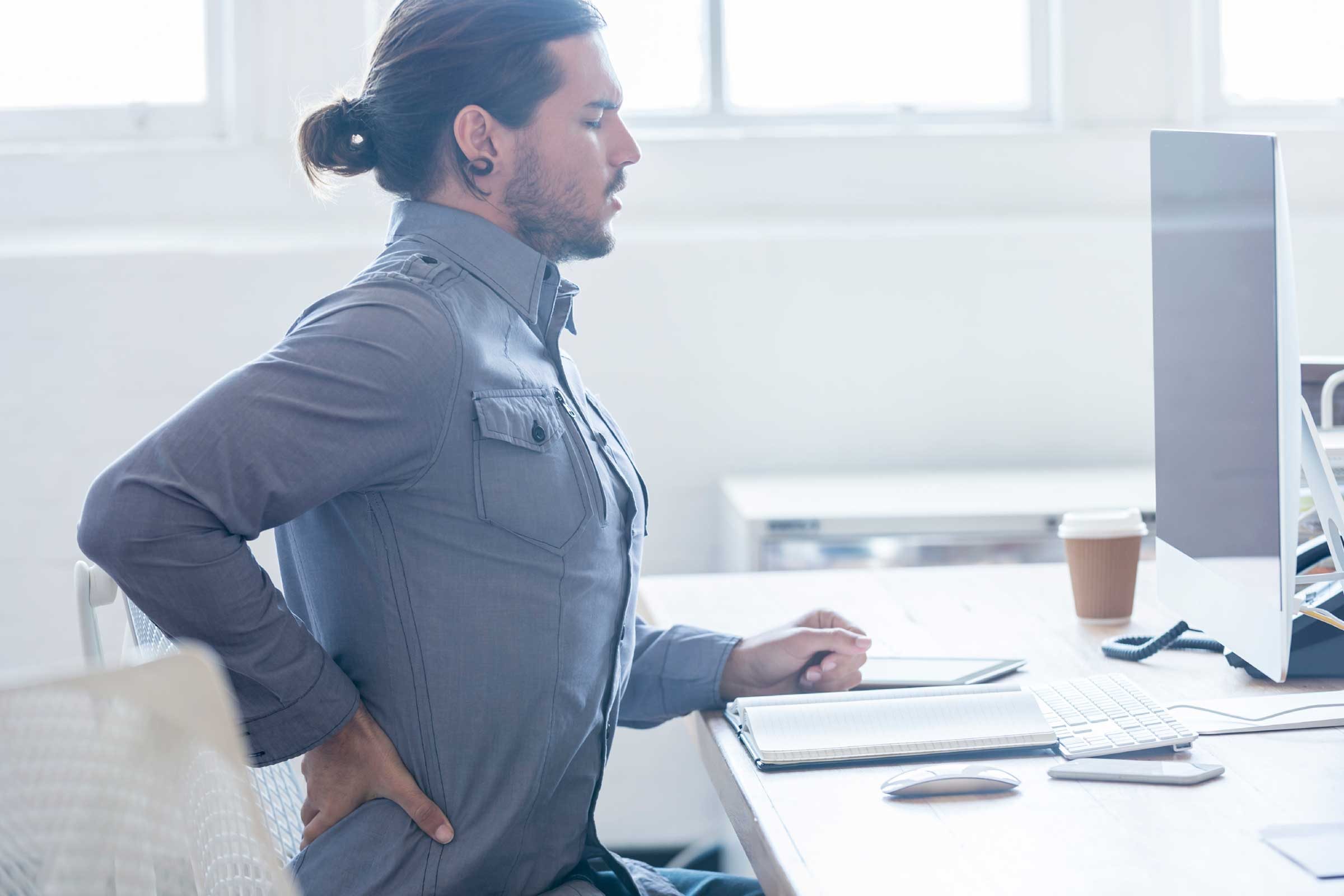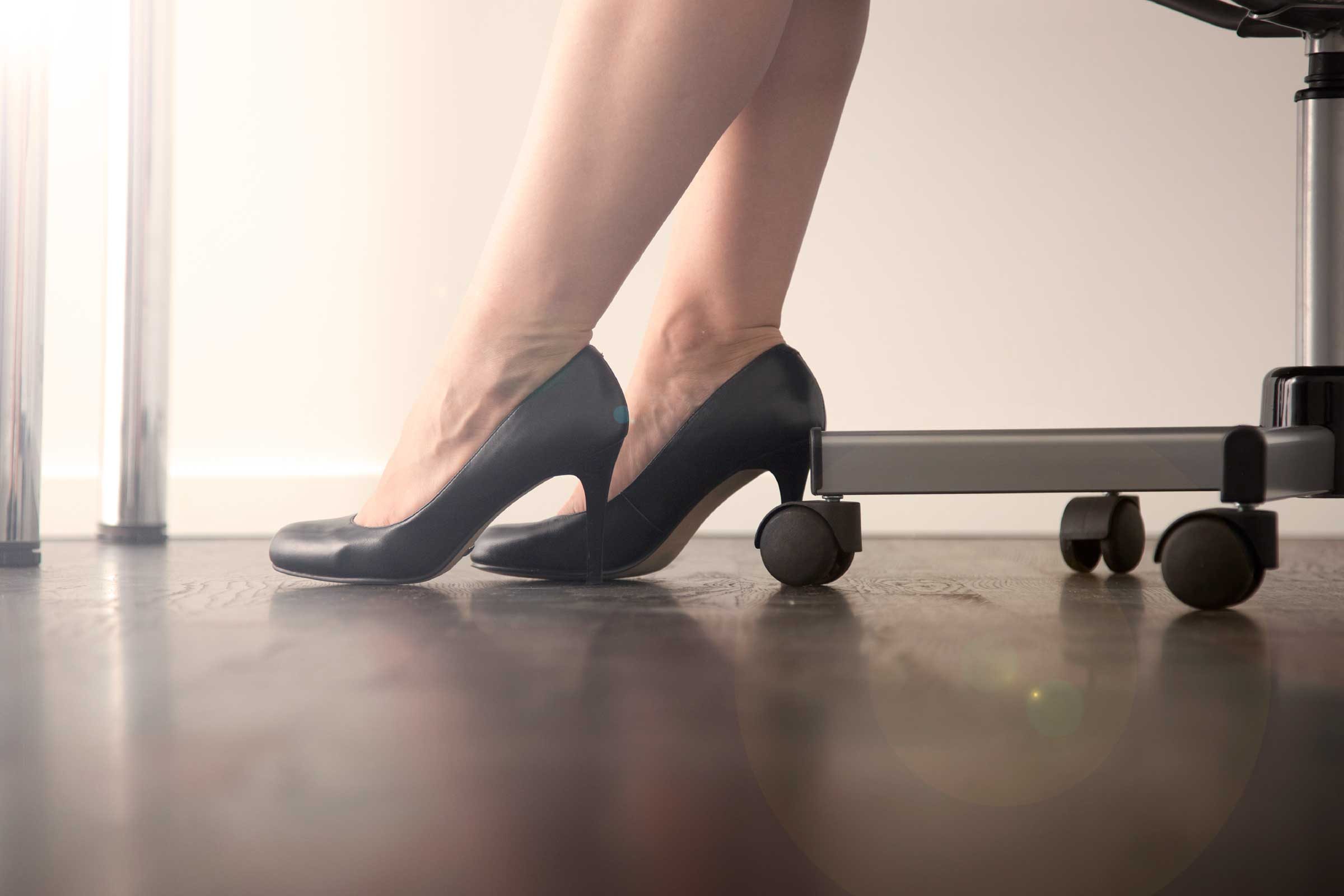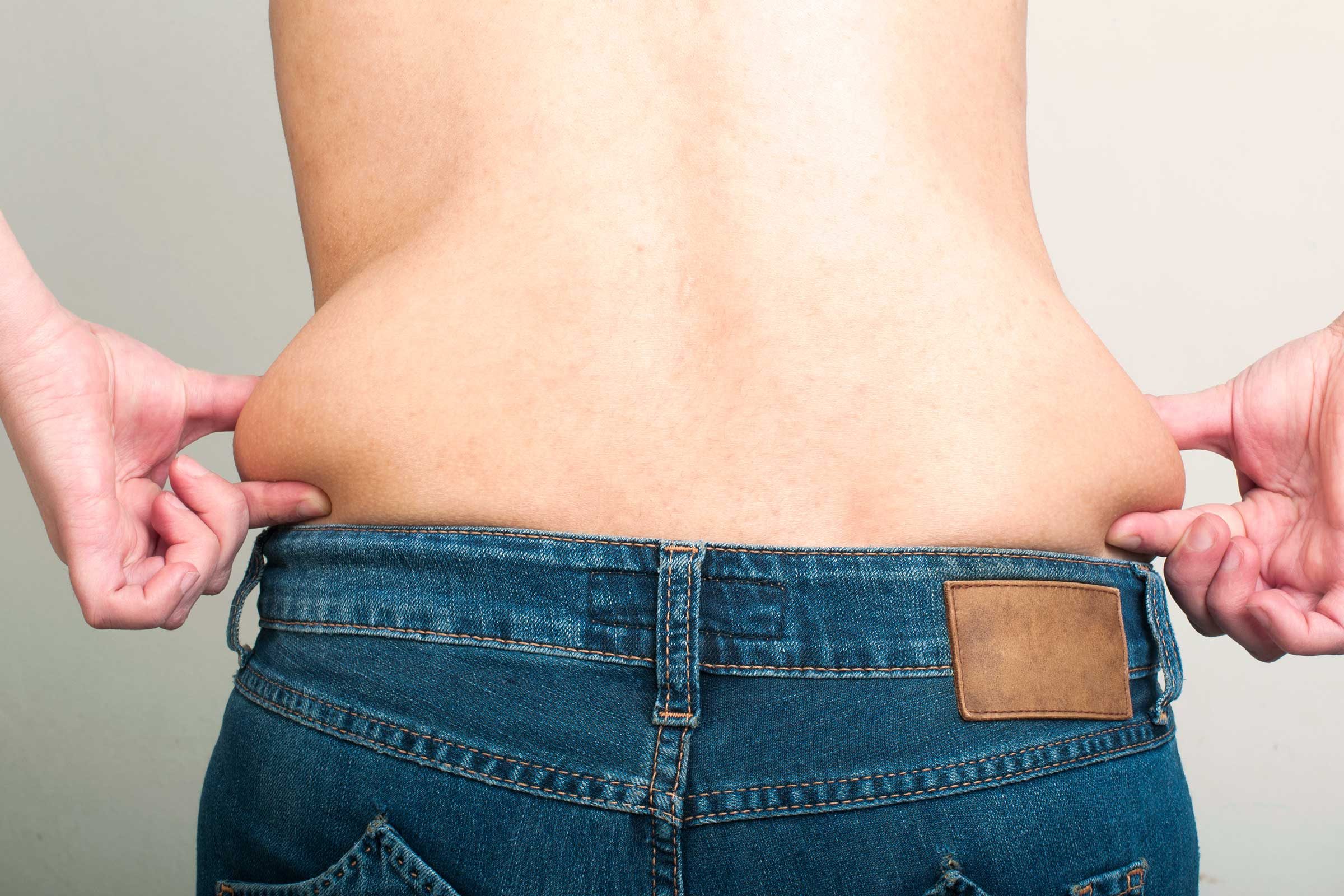
Sitting side effect: Neck pain
Craning your neck to read a computer screen can strain your spine. Keeping your head 30 degrees in front of your body requires three to four times more muscle than holding it straight, says Scott Bautch, DC, DACBOH, CCST, CCSP, president of the American Chiropractic Association’s Council on Occupational Health. Fight it: Position your computer so the middle of the screen is level with your chin, which will encourage you to keep your neck in a neutral position, Bautch says. If centering it isn’t realistic, improve your posture by elevating your computer or TV rather than positioning it so you have to look down. Turning up the brightness could also help if you find yourself straining to see the screen, Bautch says.

Sitting side effect: Lack of concentration
Sitting down restricts blood flow and keeps oxygen from reaching your brain, leaving you foggy-brained and unable to concentrate. Fight it: Trying to save time by doing all your away-from-desk tasks at once could actually work against you. “You’re actually more efficient if you move than if you don’t move,” Bautch says. Break up your day by delivering a package to a coworker at one point, then getting up later to make copies rather than saving both tasks for the same trip, he says. Here’s how one creative office helped everyone get more active and beat sitting disease.

Sitting side effect: Depression
Middle-aged women who sit for more than seven hours a day are more likely to report signs of depression than those who sit four or less hours daily, according to a study in the American Journal of Preventative Medicine. Fight it: Spend some time in nature. People who took a 90-minute walk in a natural setting were less likely to ruminate on negative emotions than those who strolled in an urban setting, found a study in Proceedings of the National Academy of Sciences. Dwelling too much on those negative thoughts can increase risk for depression and other mental illnesses, the researchers report. Here are other tricks to make your walking habit even healthier.

Sitting side effect: Insulin problems
Just a single day of being sedentary can dramatically reduce activity of insulin, which helps keep blood sugar in check, found a study in Metabolism. When your body doesn’t use insulin correctly, you could end up at risk for type 2 diabetes. Fight it: Carry a water bottle with you. When you’re dehydrated, levels of the hormone vasopressin rise, which increases blood sugar levels and hurts the body’s ability to use insulin properly. But people who drink more water have lower risk for developing type 2 diabetes, according to a French study. Aim for 17 to 34 ounces a day, which is how much the study’s highest water consumers drank. These are signs you might be dehydrated.

Sitting side effect: Lower back pain
Slouching at a desk for long period could start by causing minor aches but end with even worse back pain, Bautch says. Poor posture can squeeze spinal disks and cause their soft centers to push through to the tougher outside, leading to “catastrophic” problems, he says. Fight it: Improving your posture won’t negate a day of sitting, but it can help. “Poor posture makes recovery time longer,” Bautch says. Use a keyboard that’s separate from your screen—even if you use a laptop—to avoid slouching over, he says. Then position the keyboard so that your elbows are bent close to your body and your wrists extend out a bit, he says. These are other sneaky reasons your back hurts.

Sitting side effect: Leg pain
When legs don’t have the chance to stretch and move, the muscles start to ache. “Achy pain is the body saying, ‘Please listen to me,’ and if you don’t do that, then the pain gets worse,” Bautch says. Fight it: Reposition your chair to keep your legs comfortable. When sitting down, keep your feet flat on the floor, and set your chair height so that your knees are a little higher than your hips, Bautch says.

Sitting side effect: More fat storage
An inactive lifestyle is associated with decreased activity of the fat-burning enzyme lipoprotein lipase, found a study in Exercise and Sport Sciences Reviews. Fight it: Reset your posture by getting up or changing positions. If you can’t get away from your seat, take a microbreak every 15 minutes without getting up, Bautch recommends. Take five seconds to focus on moving one or more parts of the body. Try rolling your ankles, turning your head toward the ceiling, opening your fingers, or leaning back against your chair.

Sitting side effect: Weak bones
Inactivity breaks down bones and decreases the minerals in them, found a small study in the Journal of Bone Mineral Research. Fight it: Keep your bones strong by pairing calcium-rich foods like milk and spinach with foods packed with vitamin D, such as eggs and tuna. The vitamin D helps the body absorb calcium for maximum bone-boosting benefits.